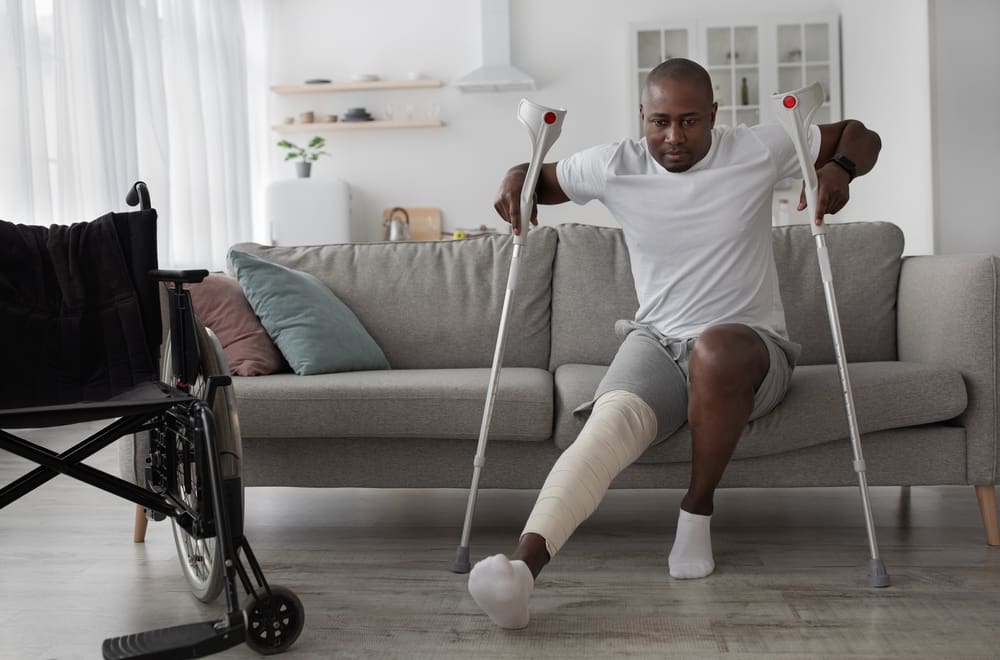Amputation is a serious medical procedure that involves removing a limb or part of a limb. While it can be life-saving in some cases, it’s a procedure best avoided whenever possible. The good news is that there are steps you can take to significantly reduce your risk of amputation. Here, we explore seven key habits you can adopt to promote healthy circulation and prevent amputation.
Understanding amputation risk factors
Amputation is most commonly caused by complications from underlying health conditions that affect circulation, particularly diabetes and peripheral artery disease (PAD). Diabetes can damage nerves and blood vessels, leading to poor circulation in the legs and feet. PAD is a narrowing of the arteries in the legs, which reduces blood flow and increases the risk of tissue death.
Other risk factors for amputation include:
- Severe trauma
- Infection
- Long-term tobacco use
Seven habits to reduce amputation risk
By adopting these key habits, you can significantly improve your circulation and decrease your risk of amputation:
-
Manage chronic conditions: If you have diabetes, it’s crucial to manage your blood sugar levels effectively through medication, diet and exercise. Regularly monitoring your blood sugar and adhering to your treatment plan is essential. If you have PAD, working with your doctor to manage cholesterol and blood pressure can help prevent further narrowing of the arteries.
-
Maintain a healthy weight: Excess weight puts a strain on your circulatory system. Losing weight — even a moderate amount — can improve blood flow and reduce your risk of developing diabetes and PAD.
-
Prioritize a healthy diet: Eating a balanced diet rich in fruits, vegetables and whole grains provides your body with the nutrients it needs for optimal health. Limit saturated and trans fats, processed foods and added sugars, as these can contribute to weight gain and worsen circulation issues.
-
Don’t smoke: Smoking is a major risk factor for amputation. Smoking damages blood vessels and restricts blood flow, particularly to the extremities. Quitting smoking is one of the most significant steps you can take to improve your circulation and overall health.
-
Exercise regularly: Regular physical activity improves circulation by strengthening your heart and blood vessels. Aim for at least 150 minutes of moderate-intensity exercise or 75 minutes of vigorous-intensity exercise per week. Activities like walking, swimming, cycling and dancing are all excellent choices.
-
Practice daily foot care: People with diabetes and other conditions that affect circulation need to pay close attention to their feet. Inspect your feet daily for any cuts, blisters or signs of infection. Wash your feet daily with warm water and mild soap, dry them thoroughly and moisturize them to prevent cracking.
-
Wear proper footwear: Well-fitting shoes are essential for protecting your feet and promoting good circulation. Choose shoes that are comfortable, have good arch support and fit snugly without constricting your toes. Avoid tight-fitting shoes or high heels, as these can restrict blood flow.
Early detection and treatment
Early detection and treatment of any underlying health conditions that can lead to amputation are crucial. Regular checkups with your doctor — including foot exams for people with diabetes — are essential. If you experience any symptoms of poor circulation, such as numbness, tingling, pain or changes in skin color in your legs or feet, seek medical attention promptly.
Additional tips
-
Manage stress: Chronic stress can contribute to unhealthy lifestyle choices and worsen circulation problems. Practice relaxation techniques like yoga, meditation, or deep breathing to manage stress effectively.
-
Get enough sleep: Aim for 7-8 hours of quality sleep each night. Adequate sleep allows your body to repair and heal itself, promoting overall health and well-being.
-
Stay hydrated: Drinking plenty of water throughout the day helps to keep your blood flowing smoothly and delivers essential nutrients to your tissues.
By incorporating these habits into your daily routine, you can significantly reduce your risk of amputation and promote overall leg health. Remember, prevention is always better than cure. Taking charge of your health and adopting these proactive measures can help you keep your limbs healthy and strong for years to come.
Disclaimer: This article is for informational purposes only and does not constitute medical advice. Always consult with your doctor for personalized recommendations regarding your health and well-being.
This story was created using AI technology.













